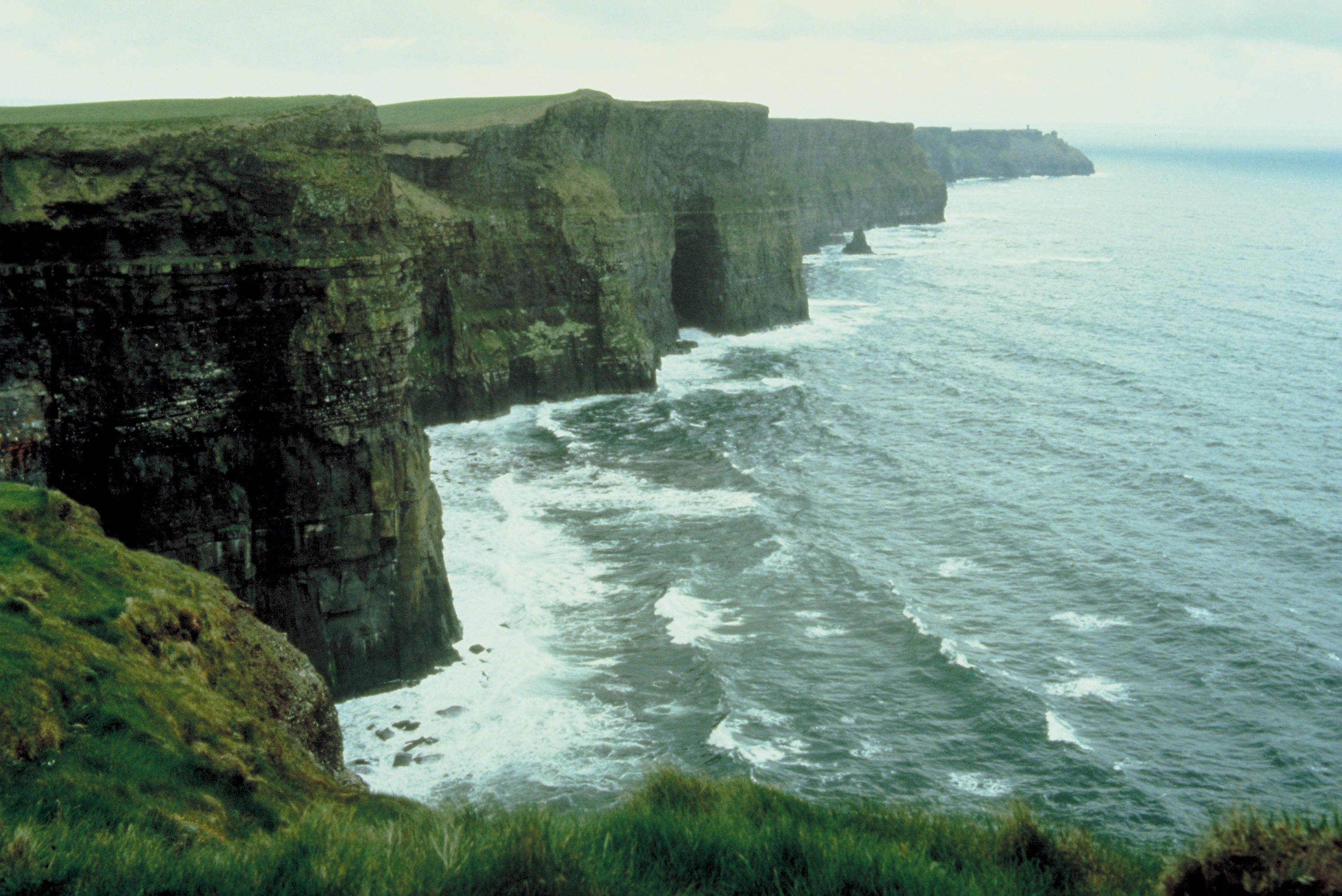Some Interesting Facts about the Cliffs Of Moher in Co. Clare
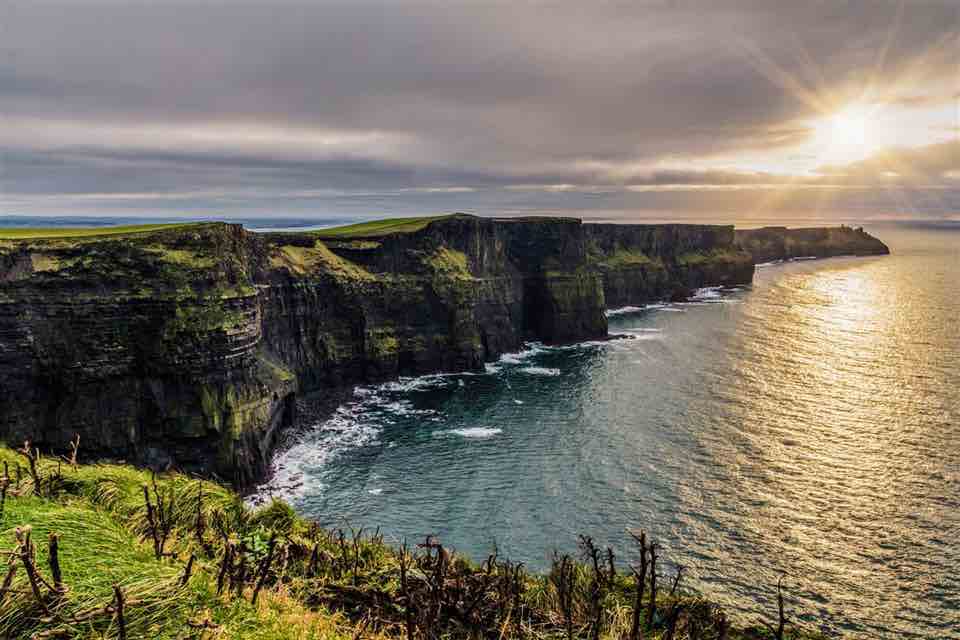
The Cliffs of Moher
The Cliffs of Moher
(Irish: Aillte an Mhothair) are located in County Clare, on
Ireland’s West Coast and are a highlight of the very successful tourist route,
the Wild Atlantic Way.
These very impressive cliffs are 702 feet/214 meters at their highest point. These dramatic and sheer cliffs are 14 km (8.6 miles) in length, with a narrow cliff top path hugging the edge. There is also a 300 million-year-old river channel buried within the cliffs.
While they are not the highest cliffs in Ireland – that
honour goes to Co Donegal’s Slieve League Cliffs and Achill
Island’s Croaghaun Cliffs – they are by far the most visited. With 1.6
million visitors last year (2020), they are the second most visited tourist
attraction in Ireland after the Guinness Storehouse in Dublin, which attracted
1.7 million people.
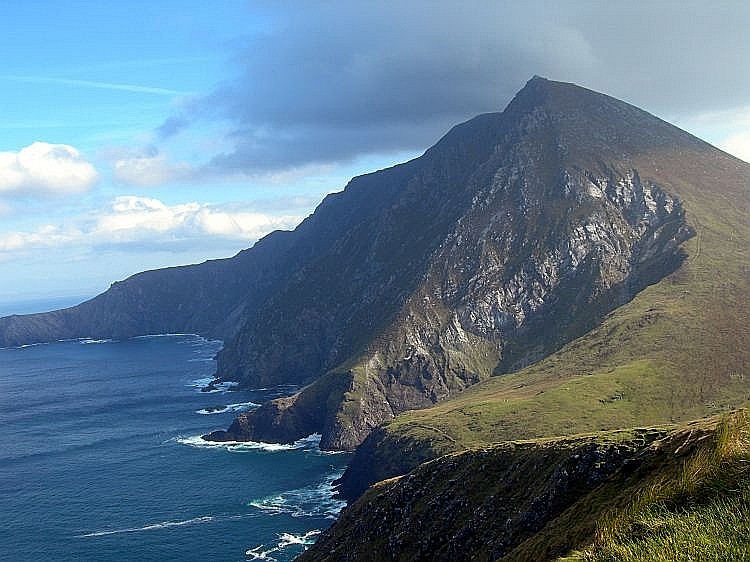
The Croaghan Cliffs at Achill Island
Birdwatcher’s Dream Destination
It is not just humans who are attracted to these iconic cliffs - the Cliffs of Moher are also home to the largest colony of nesting seabirds on mainland Ireland. At peak season, there are an estimated 30,000 pairs of birds living on the cliffs, representing more than 20 species Some of the birds include Puffins, choughs, kittiwakes, guillemot, razorbills and fulmar. In the sea below, whales, basking sharks, dolphins, seals and otters are found. Because of the importance of these species, the area has been designated a Special Area of Conservation and is protected under the EU habitats Directive. Puffins arrive at the Cliffs at the end of March and stay till mid July. The best months to see them are May and June.
Dolphins and basking sharks can be seen fairly often and grey seals can also
be seen at the foot of the cliffs occasionally. During the autumn
you may see minke or humpback whales passing the cliffs on their
migration paths.

Puffins at the Cliffs of Moher. Photo copyright - Cliffs of Moher Visitor Centre
Moher Flags
As you walk around the Cliffs of Moher Visitor Centre you will notice that the walls and footpath are lined with slabs of rock with curious and distinctive markings. These flagstones (known locally as ‘Moher Flags’) are quarried from the top of the Cliffs of Moher and the sinuous markings are the traces formed by unknown creatures that burrowed through the sand and mud nearly 320 million years ago. These flagstones are used for building stone and have been exported overseas since the 1800’s.
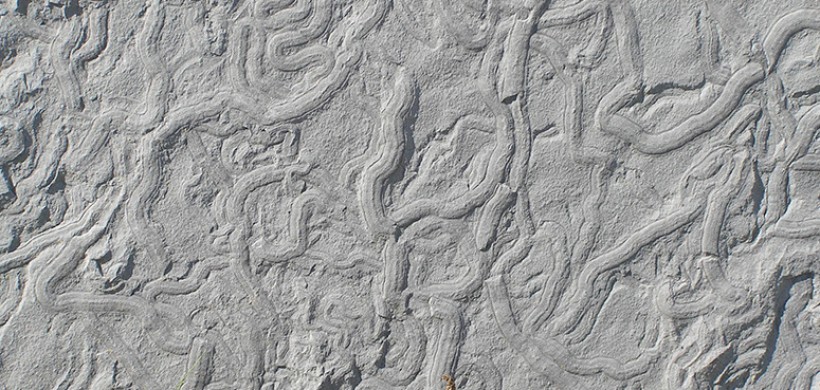
Detail of Moher Flagstone showing the unusual markings
Early Tourism
O’Brien’s tower, just south of today’s visitor centre, was built in 1835 by the local landowner, Cornelius O’Brien. This early tourism entrepreneur built the tower as an observation tower and tea house in response to a visibly growing tourism market in the west of Ireland for the Victorian English visitors, who flocked to this “wild” site. From the tower, you can see from south Clare all the way to Connemara and even out to the Aran Islands (on a clear day). O’Brien thought the attraction might benefit the local economy and help to release people from poverty. The idea behind its build was to charge visitors for the even better viewpoint from atop the tower. However, the sight from the bottom is really just as good, especially on a clear day. But it adds a nice touch to the area.
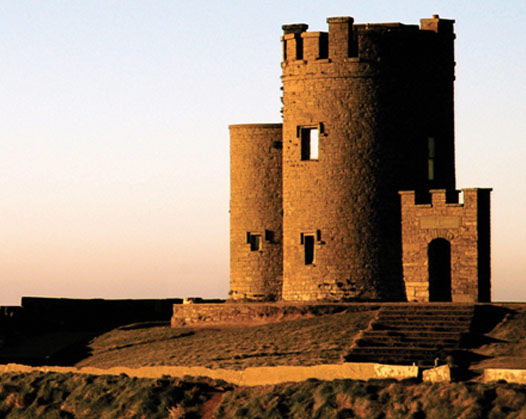
O'Brien's Tower at the Cliffs of Moher
Movie Star Cliffs
In cinema, the cliffs have appeared in several films,
including The Princess Bride (1987). The cliffs appear in
a stunning shot from sea level as the Man in Black scales the enormous height
to save Princess Buttercup from her captors. The tension and excitement of the scene
is made so much more effective with the backdrop of the dramatic cliffs and the
panoramic shots of the ocean below.
The scene in Harry Potter and the Half-Blood Prince (2009) where Dumbledore and Harry travelled to a cave to locate one of Voldemorts Horcruxes was shot in one of the caves at the Cliffs of Moher. The two iconic characters take flight to their remote destination before balancing on a rock jutting from the Atlantic. Where better than these awe-inspiring cliffs to provide a fantastic backdrop to this dramatic scene! Upon entering the cave Dumbledore exclaims, “This place has known magic”. We agree!
The opening scene of Ryan's Daughter (1970) shows the main character, Rosy, losing her
parasol on the infamous cliffs before this iconic film with the story of
unrequited love between a married Irish lady and an English soldier during
World War I unfolds.
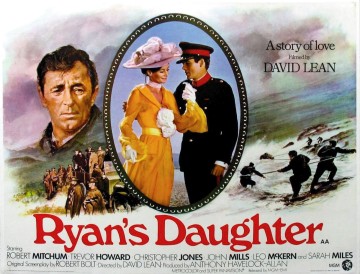
Aileen’s Wave
At certain times of the year, with a precise combination of
stormy conditions and easterly winds, the conditions are just right to create a
wave that can soar to an amazing 12 metres height just off the Cliffs of Moher.
This wave has become known as Aileen’s Wave. Lahinch surf
school owner, John McCarthy, was to become the first surfer to take on incredible
wave, and his experience has since helped put Irish big wave surfing on the map.
Aileen’s wave needs very
special conditions to create it so don’t worry if you don’t manage to see it while
in the area - there is a photographic exhibition in the sheltered surroundings
of the Cliffs of Moher Visitor Centre of surfers riding the wave.
The main visitor centre is in theory free entry but the price of the car park is very expensive and is charged €10.00 per person in the car at peak times (11 am to 4pm).
Tip - avoid the crowds and enjoy reduced rates if you visit the centre before 11am or after 4pm.
A cheaper way of visiting the Cliffs is to go to Guerin's Path car park where you pay €2 per car and get to visit an equally spectacular part of the Cliffs for a fraction of the cost. You can still walk along the cliff path to see O'Brien's tower and other attractions.
If you feel like an amazing walk, you can drive to Doolin and walk the Doolin Cliff Walk to the Cliffs of Moher. This is a really spectacular walk and highly recommended. The walk is roughly 8 km and takes about 3 hours along a gravel path and finishes at the Cliffs of Moher visitor centre. A reasonable level of fitness is needed and it is not suitable for young children. There is public transport available for your return to Doolin but be sure to check bus times as these can be quite limited. Guided walks are available also, for example with local historian and walking enthusiast, Pat Sweeney - http://www.doolincliffwalk.com/
If you enjoyed this blog post, you can buy me a coffee at the "Buy me a Coffee" link below. Thanks for reading!
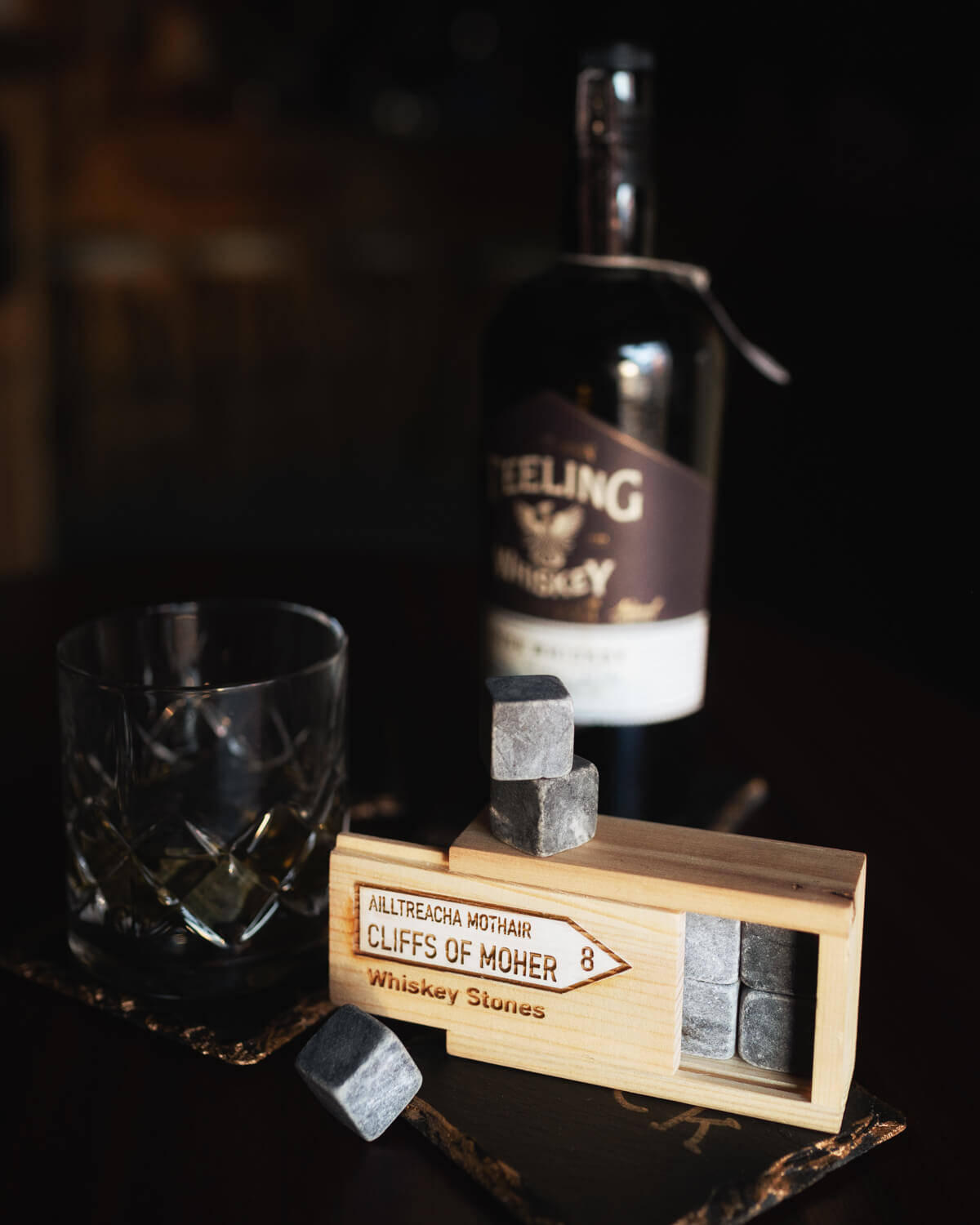
These little cubes of marble are put in the freezer for a few hours and then used as a substitute for ice in any drink.

